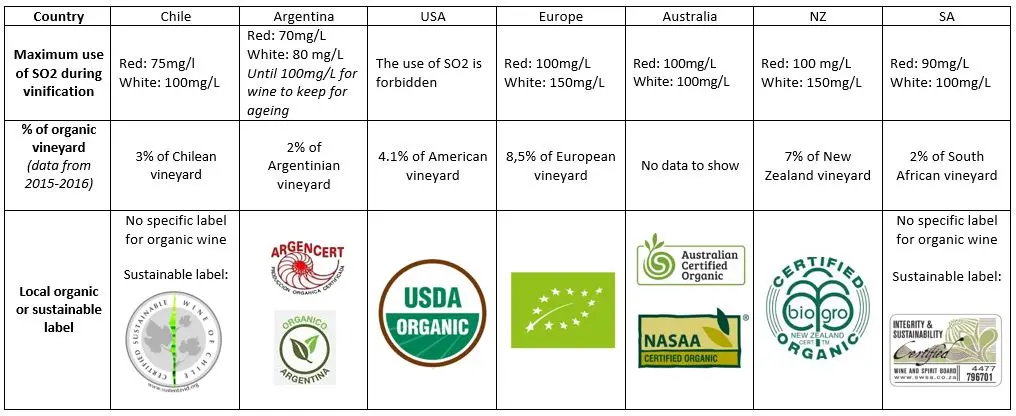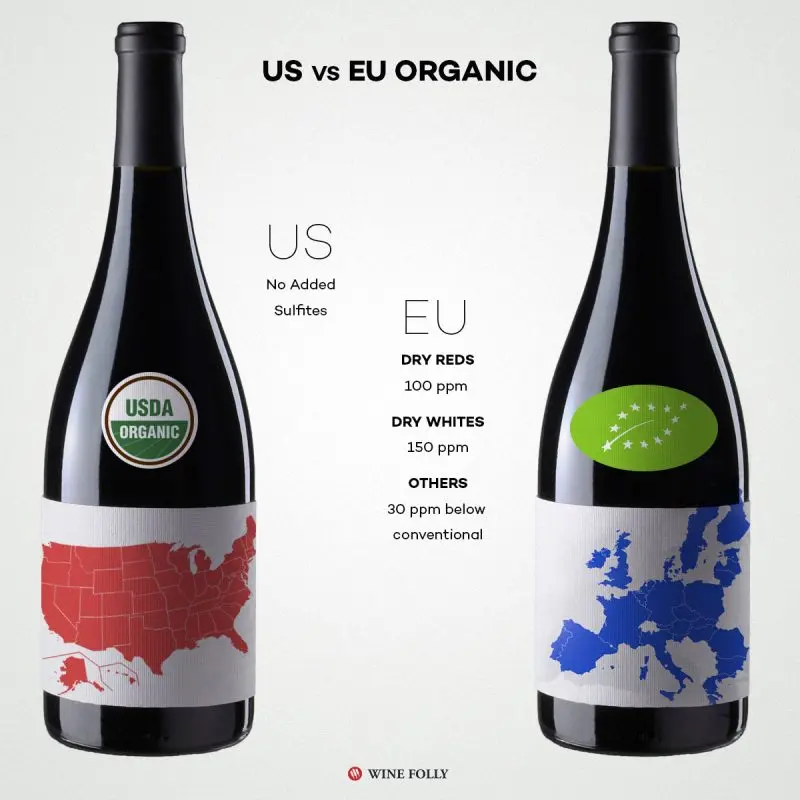Contents
Now on the shelves of grocery stores you can find a full range of products with the prefix “bio”, ranging from “bio buckwheat” to bio wine. In English sources, such drinks are sometimes called biodynamic (biodynamic) or organic (organic). The term means that the wine is made using eco-technologies from organic raw materials grown without the use of pesticides, chemical and synthetic fertilizers.
Statistics
As of 2018, about 2000 official bio wine producers are registered in the world, 885 of them are located in France. The official and generally accepted definition of the term “bio wine” does not yet exist, in each country it may mean different characteristics.
The share of organic wine accounts for about 4% of the world market, but growth is noticeable in this segment, since 4-5 years ago bio wines occupied less than 1%.
Production and preservatives
Bio wine is made from organic grapes grown in the most natural, “traditional” conditions, without the use of modern means of protecting the vine from pests, etc.

Some producers (mainly in the EU and Canada) believe that sulfur dioxide (SO2), a natural preservative, can be added to alcohol during bottling so that the wine can age gracefully, others (in the USA) believe that the use of sulfites is contrary to the concept of “bio products”. “. Accordingly, organic wine is often made without any preservatives and drunk young.
“Bio wine” is not necessarily synonymous with “vegetarian”, as egg whites and some animal enzymes are sometimes used to clarify the drink.
Pros and cons of organic wines
- According to studies, organic winemaking provides one and a half times more jobs than traditional winemaking, with many workers receiving a permanent rather than a seasonal contract.
- Biowine does not contain “chemistry”, therefore it is healthier.
The reverse side of the medal is a short shelf life due to the lack of preservatives and a high price.
In addition, organic production requires additional efforts from the farmer:
- most of the work is done manually;
- the cost of wages to workers increases;
- the vine may die due to disease or lack of fertilizer;
- it is necessary to maintain a distance with other, non-organic farms so that pesticides and herbicides do not get into the “bio” territories.
What is biodynamic wine
In a separate group of organic drinks is biodynamic wine (biodynamic wine) – created according to the method of Rudolf Steiner, which was released in 1924. The technology combines elements of organic farming, mysticism and spiritualism.
Officially, this idea is called the spiritual-ethical-ecological approach to agriculture. The farm is considered as a single living organism that provides for itself. The cultivation of grapes is synchronized with the rhythm of the moon and planets, and herbal extracts are used to restore the soil.
The most effective fertilizer in the biodynamic approach is a cow horn stuffed with manure on the day of the autumn equinox, which is buried in the soil until spring. The resulting compost is diluted in water and irrigated plantation.

Supporters of biodynamic wines vehemently protest when their drinks are classified as organic, because in addition to the absence of chemicals during cultivation, biodynamic products are also enriched with space philosophy!
In fact, biodynamic wines are difficult to stabilize, transport and store. They are sharp in taste, cloudy, usually with smells that are not inherent in traditional wine. Rather, these are drinks of enthusiasts than connoisseurs.
Bio wine labeling
American organic wines must be labeled “Made with Organically Grown Grapes”, European samples have a green logo with the letters AB.

The organoleptic properties
If we compare classic and organic wines (but not biodynamic ones), then, all other things being equal, the organoleptic properties are no different, but the bouquet of bil wines is less complex, since the absence or short exposure does not allow the drink to become truly deep.
Appetizers and serving rules are the same as usual: red wine goes better with meat and hearty dishes, white wine with poultry, fish, salads and seafood.









